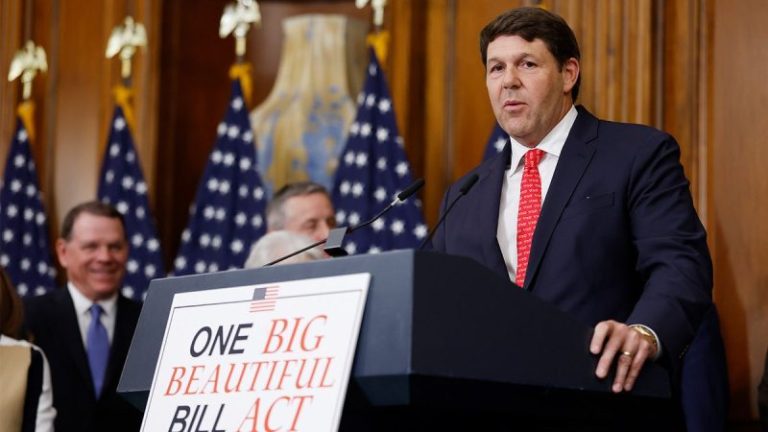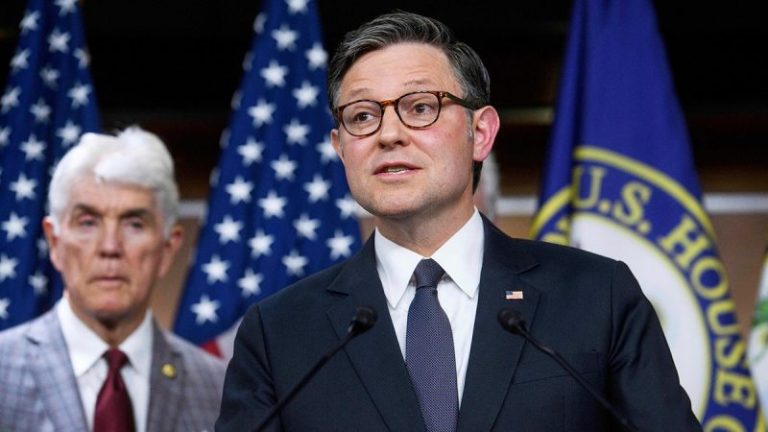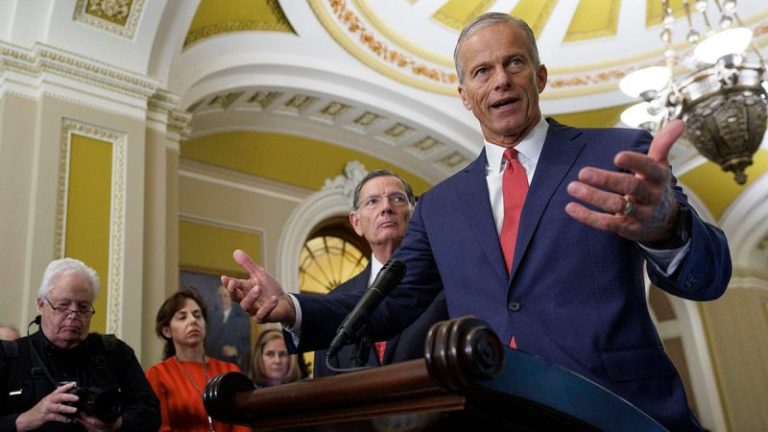(TheNewswire)
Vancouver, British Columbia TheNewswire – November 10, 2025 Juggernaut Exploration Ltd (JUGR.V) (OTCPK: JUGRF) (FSE: 4JE) ( the ‘Company’ or ‘Juggernaut’) is excited to announce that detailed mapping and sampling have confirmed that the gold-rich Big Mac Zone, Whopper Zone and Gold Dome Zone all form part of the 22 Km 2 district-scale Eldorado System that remains wide open where grab samples assayed up to 263.70 gt AuEq or 8.48 ozt AuEq and channel cuts assayed up to 4.89 gt AuEq over 5.21 m from >400 mineralized veins that are up to 10 m wide hosted in shear zones up to 50 m wide, and are exposed on surface for >1 km with >1 km of vertical relief, remains open and is drill ready on the Big One property (the ‘Property’), Golden Triangle, British Columbia. In addition, based on excellent assay results, the Company has acquired additional claims and expanded the Gold Swarm discovery area of strong gold potential from 1 km 2 to 3 km 2 and 700 m of vertical relief and remains open, effectively tripling this area of strong gold potential, where grab samples assayed up to 231.81 gt AuEq or 7.45 ozt AuEq and channel cuts assayed up to 4.51 gt AuEq over 4.36 m that remains open and is drill ready. The Big One discovery is located in an area of recent glacial and snowpack abatement adjacent to the Tier 1 gold-rich porphyry systems, the likes of Galore Creek. The 100% controlled Big One property covers 39,271 hectares of geological terrane with tremendous additional discovery potential.
Link to map with samples > 1 g/t AuEq
Big One Gold Rich District Scale System Highlights:
-
The district-scale Eldorado System covers an area ~half the size of the Island of Manhattan (22 km ) that remains wide open where grab samples assayed up to 263.70 g/t AuEq or 8.48 oz/t AuEq and channel cuts assayed up to 4.89 g/t AuEq over 5.21 m from 400 mineralized veins that remain open and are up to 10 m wide, the equivalent to ~3-story building, hosted in shear zones up to 50 m wide, comparable to a 15-story building, and are exposed on surface for 500 m, or 5 football fields, with 1 km of vertical relief, the height of 2.5 Empire State Buildings.
Link to Gold Dome Figure
Link to Whopper Zone Figure
-
The Gold Swarm Area of strong gold potential has been expanded from 1 km to 3 km , equivalent to more than the downtown core of Vancouver B.C, with 700 m of vertical relief and remains wide open, with 100 veins up to 4.5 m wide, the equivalent of a 1.5-story building, and exposed on surface for 200 m equivalent to 2 football fields and remain open containing grab samples that assayed up to 231.81 g/t AuEq or 7.45 oz/t AuEq a nd channel cuts that assayed up to 4.51 g/t AuEq over 4.36 m. The Gold Swarm Area is drill ready.
Link to Goldswarm Figure
|
Grade (AuEq)
|
>1 g/t
|
>3 g/t
|
>5 g/t
|
>10 g/t
|
>15 g/t
|
>20 g/t
|
>30 g/t
|
>60 g/t
|
>90 g/t
|
|
Samples
|
219
|
129
|
95
|
66
|
51
|
40
|
23
|
8
|
5
|
-
Gold samples up to 256.60 g/t or 8.25 oz/t, silver samples up 2810 g/t or 90.34 oz/t, and copper samples up to 14.40 % were collected on Big One.
-
Detailed mapping has confirmed common orientations as well as similar geochemical signatures and textures of the gold-mineralized veins along the 15 km Highway of Gold corridor surrounding the snowcap of Deeker Glacier, strongly indicating that the gold-rich mineralization found throughout is all part of one huge district-scale gold system that remains wide open.
-
The polymetallic veins, alteration signature, geochemical pathfinder element signature, and geophysical anomalies strongly indicate the presence of a large common buried gold-silver-copper rich porphyry feeder source or similar magmatic source or sources at depth responsible for the extensive high-grade veining confirmed on surface over 22 km
-
The company recently received a 5-year property-wide advanced exploration drill permit.
-
Detailed geological and structural mapping has been completed on the reported drill targets in order to define the full geometry of these high-grade gold-bearing shears and veins and will be instrumental in designing the drill plan for the upcoming maiden drill program.
-
A high-resolution UAV photogrammetry survey was completed over an area of 52 km2 on the Eldorado System and Gold Swarm Zone encompassing all of the maiden drill targets. The data will be used to support modelling and define targeting the high-grade gold mineralization recently discovered.
-
A property wide LiDAR survey covering an area of 385 km has been conducted and will be used to augment information obtained from the mapping as well as plan the upcoming inaugural drill campaign.
-
Multiple drill-ready targets have been confirmed and are planned to be tested in the fully funded inaugural drill program and include but are not limited to: the 22 km Eldorado System hosting the Gold Dome Zone where grab samples assayed up to 263.70 g/t AuEq or 8.48 oz/t AuEq; the Big Mac Zone where grab samples assayed up to 113.92 g/t AuEq or 3.66 oz/t AuEq; the Whopper Zone where grab samples assayed up to 43.94 g/t AuEq or 1.41 oz/t AuEq; and the Gold Swarm Area where grab samples assayed up to 231.81 g/t AuEq or 7.45 oz/t AuEq.
-
Juggernaut is working in consultation with the Tahltan First Nation and the local community and is committed to maintaining respectful and collaborative relationships. As we advance exploration on our project, we will continue working closely with the Tahltan First Nation and all the local stakeholders and regulatory agencies to ensure our activities create long-term value and reflect community priorities.
Dan Stuart, President and CEO of Juggernaut Exploration states: ‘With a district-scale discovery of this magnitude host to so many large gold-rich veins and shears exposed on surface that rise above the valley floor for >1 km we are likely only seeing the tip of the iceberg on this mountain of gold. We look forward to the fully funded maiden drill program on this remarkable gold discovery with much anticipation. The best is yet to come!’
Manuele Lazzarotto, PhD, Chief Geologist of Juggernaut Exploration, states: ‘With the advanced exploration permit in hand, we look forward to unlocking the full potential of the Big One gold discovery in the third dimension during the inaugural drill program. Once we receive, compile, and interpret all the deliverables from the detailed and regional mapping, UAV orthophotos survey, and LiDAR survey, the same team responsible for the Tier 1 Surebet gold discovery will design and execute the maiden drill program. Obvious opportunities with the scale and grades seen on Big One are extremely rare, and we have clearly barely begun to scratch the surface. The team looks forward to testing this remarkable discovery at depth.’
Table 1: Samples from 2024-2025 with assays >1 g/t AuEq
|
Sample ID
|
Year
|
Sample Type
|
Au (g/t)
|
Ag (g/t)
|
Cu (%)
|
Pb (%)
|
Zn (%)
|
AuEq (g/t)
|
|
M224886
|
2025
|
Float
|
256.60
|
546.00
|
0.43
|
0.41
|
0.01
|
263.70
|
|
M217656
|
2025
|
Float
|
226.94
|
335.00
|
0.00
|
4.99
|
0.01
|
231.81
|
|
D751423
|
2025
|
Grab
|
138.70
|
29.96
|
0.08
|
0.02
|
0.02
|
139.14
|
|
M220659
|
2025
|
Grab
|
111.35
|
159.00
|
0.02
|
3.88
|
0.01
|
113.92
|
|
M224956
|
2025
|
Grab
|
95.04
|
49.60
|
0.02
|
0.02
|
0.01
|
95.67
|
|
D751282
|
2024
|
Grab
|
79.01
|
58.90
|
0.13
|
0.43
|
0.80
|
80.08
|
|
D751407
|
2025
|
Grab
|
68.57
|
115.00
|
0.35
|
1.25
|
6.53
|
72.02
|
|
D751424
|
2025
|
Grab
|
60.08
|
9.57
|
0.01
|
0.00
|
0.01
|
60.21
|
|
D751966
|
2024
|
Grab
|
56.54
|
23.30
|
0.03
|
0.02
|
0.03
|
56.84
|
|
M220561
|
2025
|
Grab
|
55.50
|
38.62
|
0.09
|
2.02
|
0.44
|
56.47
|
|
M217807
|
2025
|
Channel
|
47.18
|
156.00
|
0.01
|
9.28
|
0.07
|
50.57
|
|
D750642
|
2025
|
Grab
|
43.99
|
102.00
|
0.00
|
9.19
|
0.44
|
46.79
|
|
M217601
|
2025
|
Channel
|
39.84
|
333.00
|
0.02
|
0.07
|
0.06
|
43.94
|
|
M217579
|
2025
|
Channel
|
34.96
|
415.00
|
0.02
|
21.13
|
0.06
|
43.38
|
|
D751216
|
2024
|
Grab
|
37.98
|
75.50
|
0.24
|
5.72
|
3.93
|
41.46
|
|
D751191
|
2024
|
Channel
|
12.12
|
2810.00
|
0.02
|
8.04
|
0.00
|
37.20
|
|
D751156
|
2024
|
Grab
|
33.72
|
177.00
|
0.27
|
2.71
|
0.27
|
36.11
|
|
D751357
|
2025
|
Grab
|
18.06
|
333.00
|
12.05
|
0.00
|
0.14
|
32.65
|
|
M217613
|
2025
|
Channel
|
31.68
|
9.40
|
0.16
|
0.00
|
0.10
|
31.96
|
|
M224961
|
2025
|
Grab
|
31.25
|
13.98
|
0.39
|
0.00
|
0.00
|
31.77
|
|
D750638
|
2025
|
Grab
|
14.46
|
621.00
|
0.11
|
54.39
|
0.44
|
30.79
|
|
D751375
|
2025
|
Grab
|
28.47
|
70.39
|
0.15
|
2.43
|
0.40
|
29.94
|
|
D751402
|
2025
|
Grab
|
29.23
|
11.44
|
0.17
|
0.01
|
0.00
|
29.52
|
|
D751373
|
2025
|
Grab
|
21.44
|
172.00
|
0.07
|
15.92
|
6.21
|
27.59
|
|
D751964
|
2024
|
Talus
|
23.47
|
110.00
|
1.37
|
0.01
|
0.00
|
26.07
|
|
D750389
|
2024
|
Grab
|
8.10
|
1420.00
|
1.11
|
0.15
|
2.70
|
26.01
|
|
D751163
|
2024
|
Float
|
23.97
|
116.00
|
0.02
|
2.16
|
0.13
|
24.53
|
|
D750639
|
2025
|
Grab
|
18.12
|
174.00
|
3.36
|
2.91
|
0.03
|
23.63
|
|
M217567
|
2025
|
Channel
|
17.00
|
461.00
|
0.04
|
0.87
|
0.31
|
22.86
|
|
D750624
|
2025
|
Grab
|
21.62
|
45.06
|
0.00
|
2.33
|
0.16
|
22.58
|
|
M217705
|
2025
|
Channel
|
20.78
|
48.45
|
0.62
|
2.37
|
1.05
|
22.53
|
|
M224905
|
2025
|
Talus
|
9.48
|
646.00
|
5.48
|
0.05
|
0.05
|
22.15
|
|
M224982
|
2025
|
Chip
|
21.17
|
20.30
|
0.02
|
0.92
|
0.03
|
21.58
|
|
M217655
|
2025
|
Grab
|
19.64
|
15.34
|
0.00
|
1.37
|
2.93
|
20.74
|
|
M224983
|
2025
|
Grab
|
14.06
|
191.00
|
0.15
|
17.27
|
4.50
|
20.31
|
|
D751365
|
2025
|
Grab
|
9.35
|
566.00
|
0.01
|
25.22
|
0.06
|
20.24
|
|
M217657
|
2025
|
Grab
|
18.11
|
88.95
|
0.00
|
2.08
|
0.01
|
19.53
|
|
D750621
|
2025
|
Grab
|
3.76
|
223.00
|
14.45
|
0.00
|
0.11
|
19.09
|
|
D750644
|
2025
|
Grab
|
18.47
|
12.54
|
0.00
|
0.89
|
0.01
|
18.77
|
|
D750625
|
2025
|
Grab
|
18.32
|
6.19
|
0.01
|
0.01
|
0.55
|
18.54
|
|
D751374
|
2025
|
Talus
|
16.60
|
66.43
|
0.38
|
1.82
|
0.60
|
18.17
|
|
D750641
|
2025
|
Grab
|
15.52
|
55.65
|
0.63
|
1.85
|
0.08
|
17.06
|
|
M224959
|
2025
|
Grab
|
15.94
|
16.54
|
0.00
|
0.01
|
0.01
|
16.15
|
|
D750394
|
2024
|
Grab
|
13.12
|
163.00
|
0.51
|
1.65
|
0.42
|
16.04
|
|
M217852
|
2025
|
Channel
|
15.39
|
20.95
|
0.04
|
1.02
|
0.37
|
15.93
|
|
M217649
|
2025
|
Channel
|
14.96
|
22.24
|
0.41
|
0.64
|
0.95
|
15.92
|
|
D751285
|
2024
|
Grab
|
3.74
|
91.20
|
7.96
|
0.01
|
0.01
|
13.18
|
|
D751975
|
2024
|
Grab
|
10.62
|
198.00
|
0.00
|
0.77
|
0.01
|
13.10
|
|
D750192
|
2024
|
Grab
|
3.44
|
220.00
|
6.61
|
0.00
|
0.01
|
12.91
|
|
M224932
|
2025
|
Grab
|
0.00
|
755.00
|
0.63
|
6.07
|
7.28
|
12.43
|
|
D750852
|
2025
|
Subcrop
|
1.07
|
860.00
|
0.01
|
2.12
|
1.32
|
12.20
|
|
M220602
|
2025
|
Grab
|
11.92
|
2.04
|
0.01
|
0.00
|
0.04
|
11.96
|
|
M224883
|
2025
|
Grab
|
11.07
|
20.98
|
0.03
|
0.01
|
0.00
|
11.36
|
|
D751943
|
2024
|
Grab
|
4.00
|
128.00
|
0.30
|
15.35
|
8.35
|
11.32
|
|
D750198
|
2024
|
Float
|
6.01
|
34.10
|
0.14
|
0.04
|
15.30
|
11.21
|
|
M217784
|
2025
|
Channel
|
10.83
|
1.88
|
0.00
|
0.00
|
0.04
|
10.87
|
|
D750704
|
2025
|
Grab
|
2.59
|
325.00
|
0.35
|
22.97
|
1.56
|
10.83
|
|
D750608
|
2024
|
Grab
|
10.62
|
3.20
|
0.00
|
0.01
|
0.01
|
10.67
|
|
M217785
|
2025
|
Channel
|
10.17
|
1.97
|
0.00
|
0.00
|
0.01
|
10.20
|
|
M224957
|
2025
|
Grab
|
9.65
|
15.14
|
0.03
|
0.18
|
0.48
|
10.00
|
|
D751154
|
2024
|
Grab
|
5.72
|
218.00
|
0.22
|
1.81
|
1.34
|
9.20
|
|
D751969
|
2024
|
Float
|
5.59
|
185.00
|
0.40
|
1.91
|
0.98
|
8.82
|
|
D751284
|
2024
|
Float
|
6.34
|
47.70
|
0.03
|
6.78
|
0.59
|
8.66
|
|
D751151
|
2024
|
Float
|
2.79
|
474.00
|
0.01
|
20.00
|
1.22
|
8.59
|
|
D751192
|
2024
|
Channel
|
3.39
|
366.00
|
0.01
|
0.11
|
0.00
|
7.68
|
|
D751372
|
2025
|
Grab
|
7.44
|
16.56
|
0.00
|
0.17
|
0.01
|
7.67
|
|
D751104
|
2024
|
Float
|
3.79
|
204.00
|
0.30
|
4.60
|
1.12
|
7.54
|
|
D750395
|
2024
|
Grab
|
6.01
|
105.00
|
0.01
|
0.06
|
0.09
|
7.42
|
|
D750643
|
2025
|
Grab
|
7.36
|
2.04
|
0.00
|
0.03
|
0.02
|
7.40
|
|
M217571
|
2025
|
Channel
|
6.06
|
89.91
|
0.04
|
0.01
|
0.67
|
7.35
|
|
M220559
|
2025
|
Grab
|
1.55
|
262.00
|
0.01
|
13.83
|
0.08
|
6.94
|
|
M220601
|
2025
|
Grab
|
6.77
|
5.19
|
0.08
|
0.00
|
0.01
|
6.91
|
|
M224865
|
2025
|
Grab
|
0.05
|
213.00
|
4.32
|
0.07
|
0.48
|
6.53
|
|
M217589
|
2025
|
Channel
|
5.81
|
19.08
|
0.35
|
0.37
|
0.28
|
6.48
|
|
D751403
|
2025
|
Float
|
6.13
|
14.47
|
0.00
|
0.02
|
0.01
|
6.31
|
|
D751368
|
2025
|
Talus
|
6.09
|
6.80
|
0.01
|
0.25
|
0.04
|
6.24
|
|
D751433
|
2025
|
Grab
|
0.03
|
139.00
|
2.99
|
4.42
|
4.65
|
6.13
|
|
D751369
|
2025
|
Grab
|
4.97
|
71.63
|
0.02
|
1.44
|
0.07
|
6.10
|
|
D751939
|
2024
|
Channel
|
5.06
|
96.30
|
0.00
|
0.05
|
0.03
|
6.10
|
|
M217566
|
2025
|
Channel
|
4.40
|
118.00
|
0.02
|
0.13
|
0.22
|
5.93
|
|
D751107
|
2024
|
Float
|
4.09
|
71.80
|
0.22
|
1.20
|
0.95
|
5.71
|
|
D751112
|
2024
|
Float
|
4.94
|
59.50
|
0.00
|
0.31
|
0.02
|
5.70
|
|
M217702
|
2025
|
Channel
|
4.30
|
38.77
|
0.58
|
2.16
|
0.10
|
5.64
|
|
M224981
|
2025
|
Grab
|
5.31
|
13.36
|
0.01
|
0.69
|
0.04
|
5.60
|
|
D751435
|
2025
|
Grab
|
5.19
|
10.98
|
0.00
|
0.54
|
0.20
|
5.46
|
|
D751158
|
2024
|
Grab
|
4.60
|
30.70
|
0.04
|
1.36
|
0.02
|
5.31
|
|
M220673
|
2025
|
Grab
|
0.00
|
345.00
|
0.03
|
0.45
|
4.17
|
5.29
|
|
M217648
|
2025
|
Channel
|
4.69
|
7.08
|
0.26
|
0.44
|
0.43
|
5.17
|
|
M217788
|
2025
|
Channel
|
5.15
|
1.29
|
0.01
|
0.01
|
0.00
|
5.17
|
|
D750657
|
2024
|
Grab
|
3.71
|
40.80
|
0.76
|
0.01
|
0.02
|
4.98
|
|
M220603
|
2025
|
Grab
|
0.39
|
313.00
|
0.26
|
1.50
|
1.07
|
4.92
|
|
D751215
|
2024
|
Grab
|
2.96
|
102.00
|
0.04
|
0.04
|
2.15
|
4.84
|
|
D750094
|
2024
|
Grab
|
0.02
|
108.00
|
1.01
|
0.06
|
8.60
|
4.83
|
|
D750632
|
2025
|
Float
|
4.44
|
20.01
|
0.02
|
0.74
|
0.01
|
4.83
|
|
D750656
|
2024
|
Grab
|
1.56
|
97.60
|
0.06
|
7.88
|
0.25
|
4.53
|
|
M217573
|
2025
|
Channel
|
4.27
|
16.46
|
0.00
|
0.00
|
0.00
|
4.48
|
|
M217643
|
2025
|
Channel
|
4.35
|
3.99
|
0.01
|
0.01
|
0.04
|
4.42
|
|
M217608
|
2025
|
Channel
|
4.35
|
1.50
|
0.00
|
0.00
|
0.01
|
4.38
|
|
D751406
|
2025
|
Grab
|
4.07
|
12.47
|
0.00
|
0.02
|
0.05
|
4.24
|
|
M224868
|
2025
|
Grab
|
0.38
|
68.48
|
3.42
|
0.01
|
0.15
|
4.23
|
|
M217805
|
2025
|
Channel
|
4.18
|
2.82
|
0.00
|
0.03
|
0.01
|
4.22
|
|
D750088
|
2024
|
Grab
|
0.16
|
143.00
|
0.04
|
7.63
|
1.50
|
4.18
|
|
M224938
|
2025
|
Grab
|
0.00
|
89.59
|
3.15
|
0.01
|
1.15
|
4.11
|
|
D751417
|
2025
|
Grab
|
3.38
|
46.67
|
0.00
|
0.41
|
0.00
|
4.02
|
|
M217637
|
2025
|
Channel
|
3.63
|
10.25
|
0.03
|
0.53
|
0.59
|
4.00
|
|
D750664
|
2024
|
Float
|
0.46
|
292.00
|
0.02
|
4.51
|
0.08
|
3.99
|
|
D750854
|
2025
|
Grab
|
0.00
|
186.00
|
0.07
|
7.28
|
1.99
|
3.95
|
|
M224935
|
2025
|
Grab
|
0.00
|
271.00
|
0.23
|
1.45
|
0.78
|
3.91
|
|
M224866
|
2025
|
Grab
|
0.20
|
146.00
|
1.78
|
0.04
|
1.31
|
3.85
|
|
M224851
|
2025
|
Chip
|
2.61
|
38.00
|
0.13
|
1.99
|
0.85
|
3.70
|
|
D751697
|
2024
|
Grab
|
0.09
|
105.00
|
2.35
|
0.01
|
0.07
|
3.65
|
|
M220553
|
2025
|
Grab
|
0.59
|
200.00
|
0.01
|
3.58
|
0.06
|
3.61
|
|
D751283
|
2024
|
Float
|
0.26
|
12.60
|
3.02
|
0.00
|
0.00
|
3.57
|
|
D751946
|
2024
|
Grab
|
0.02
|
136.00
|
0.72
|
0.18
|
4.35
|
3.54
|
|
D751699
|
2024
|
Grab
|
2.15
|
68.90
|
0.01
|
2.63
|
0.06
|
3.51
|
|
D750751
|
2025
|
Grab
|
1.16
|
82.41
|
0.03
|
4.01
|
2.80
|
3.48
|
|
M224904
|
2025
|
Grab
|
1.04
|
187.00
|
0.00
|
0.43
|
0.17
|
3.43
|
|
D751195
|
2024
|
Channel
|
1.61
|
38.20
|
0.82
|
1.27
|
0.71
|
3.37
|
|
D751398
|
2025
|
Grab
|
0.09
|
65.28
|
2.01
|
2.59
|
1.34
|
3.36
|
|
D751436
|
2025
|
Grab
|
0.14
|
80.25
|
0.09
|
13.18
|
0.20
|
3.32
|
|
D751394
|
2025
|
Grab
|
0.24
|
187.00
|
0.16
|
1.40
|
1.42
|
3.22
|
|
D750554
|
2024
|
Channel
|
0.05
|
81.50
|
0.35
|
1.05
|
5.34
|
3.17
|
|
D750199
|
2024
|
Grab
|
0.15
|
108.00
|
0.01
|
7.73
|
0.05
|
3.13
|
|
D751836
|
2024
|
Chip
|
0.22
|
114.00
|
0.00
|
5.21
|
1.59
|
2.95
|
|
D751845
|
2024
|
Chip
|
2.63
|
24.80
|
0.00
|
0.01
|
0.00
|
2.95
|
|
D751972
|
2024
|
Channel
|
1.42
|
47.30
|
0.03
|
3.43
|
0.68
|
2.90
|
|
D751846
|
2024
|
Grab
|
2.59
|
24.70
|
0.01
|
0.00
|
0.00
|
2.87
|
|
D751207
|
2024
|
Grab
|
0.04
|
256.00
|
0.01
|
12.65
|
0.01
|
2.85
|
|
M224963
|
2025
|
Grab
|
2.63
|
9.40
|
0.09
|
0.08
|
0.01
|
2.84
|
|
M224855
|
2025
|
Grab
|
2.23
|
30.34
|
0.03
|
0.95
|
0.20
|
2.83
|
|
M217727
|
2025
|
Channel
|
2.73
|
2.04
|
0.01
|
0.03
|
0.01
|
2.77
|
|
D751109
|
2024
|
Grab
|
1.65
|
89.50
|
0.10
|
0.01
|
0.03
|
2.73
|
|
D751962
|
2024
|
Grab
|
0.55
|
95.20
|
0.26
|
1.17
|
1.98
|
2.65
|
|
D751404
|
2025
|
Grab
|
2.61
|
1.26
|
0.00
|
0.00
|
0.00
|
2.63
|
|
M220555
|
2025
|
Grab
|
0.09
|
83.19
|
0.04
|
8.00
|
0.64
|
2.55
|
|
D751968
|
2024
|
Grab
|
1.49
|
53.50
|
0.01
|
1.68
|
0.13
|
2.55
|
|
D751153
|
2024
|
Grab
|
0.83
|
86.60
|
0.38
|
0.08
|
1.16
|
2.52
|
|
M220674
|
2025
|
Grab
|
0.00
|
175.00
|
0.01
|
0.62
|
0.74
|
2.42
|
|
D751213
|
2024
|
Float
|
1.65
|
51.40
|
0.02
|
0.31
|
0.02
|
2.41
|
|
M224927
|
2025
|
Grab
|
0.70
|
40.80
|
0.13
|
6.73
|
0.02
|
2.37
|
|
M217782
|
2025
|
Channel
|
0.02
|
88.40
|
0.84
|
0.78
|
1.59
|
2.32
|
|
M224902
|
2025
|
Subcrop
|
2.02
|
10.72
|
0.01
|
0.90
|
0.02
|
2.31
|
|
M220677
|
2025
|
Talus
|
0.00
|
29.29
|
0.29
|
0.29
|
6.78
|
2.26
|
|
D751992
|
2024
|
Grab
|
0.33
|
102.00
|
0.03
|
3.27
|
0.06
|
2.21
|
|
D750448
|
2024
|
Grab
|
0.42
|
71.70
|
0.03
|
4.57
|
0.09
|
2.20
|
|
D751391
|
2025
|
Grab
|
1.89
|
14.34
|
0.10
|
0.24
|
0.01
|
2.19
|
|
D751947
|
2024
|
Grab
|
0.01
|
74.70
|
0.48
|
0.09
|
2.81
|
2.16
|
|
D750086
|
2024
|
Channel
|
0.17
|
17.30
|
0.12
|
1.11
|
4.70
|
2.16
|
|
D751371
|
2025
|
Grab
|
1.56
|
39.69
|
0.00
|
0.20
|
0.00
|
2.08
|
|
M224852
|
2025
|
Grab
|
1.08
|
50.66
|
0.16
|
0.93
|
0.29
|
2.05
|
|
D750555
|
2024
|
Channel
|
0.05
|
73.10
|
0.17
|
1.03
|
2.65
|
2.03
|
|
M217618
|
2025
|
Channel
|
1.94
|
6.23
|
0.00
|
0.00
|
0.01
|
2.02
|
|
D750629
|
2025
|
Grab
|
1.23
|
39.89
|
0.15
|
0.00
|
0.58
|
1.99
|
|
D751165
|
2024
|
Grab
|
1.95
|
6.80
|
0.00
|
0.01
|
0.01
|
1.99
|
|
M217592
|
2025
|
Channel
|
1.69
|
10.63
|
0.17
|
0.02
|
0.01
|
1.97
|
|
D750393
|
2024
|
Grab
|
1.01
|
41.30
|
0.02
|
1.79
|
0.37
|
1.97
|
|
D750449
|
2024
|
Grab
|
0.24
|
32.60
|
0.01
|
6.38
|
0.02
|
1.96
|
|
D751426
|
2025
|
Grab
|
1.91
|
1.49
|
0.00
|
0.00
|
0.01
|
1.94
|
|
D751352
|
2025
|
Chip
|
0.22
|
41.10
|
1.34
|
0.01
|
0.07
|
1.91
|
|
D751422
|
2025
|
Grab
|
0.01
|
41.14
|
1.55
|
0.01
|
0.02
|
1.86
|
|
M217853
|
2025
|
Channel
|
1.75
|
2.88
|
0.00
|
0.02
|
0.06
|
1.81
|
|
M217665
|
2025
|
Channel
|
0.80
|
43.76
|
0.53
|
0.00
|
0.01
|
1.80
|
|
M224912
|
2025
|
Grab
|
1.00
|
64.20
|
0.00
|
0.01
|
0.00
|
1.78
|
|
D751194
|
2024
|
Grab
|
0.44
|
130.00
|
0.01
|
0.08
|
0.09
|
1.74
|
|
D750725
|
2025
|
Grab
|
0.00
|
62.49
|
0.07
|
4.77
|
0.60
|
1.71
|
|
M224903
|
2025
|
Grab
|
0.47
|
39.05
|
0.86
|
0.01
|
0.01
|
1.70
|
|
M217721
|
2025
|
Channel
|
0.03
|
53.49
|
0.88
|
0.46
|
0.76
|
1.70
|
|
M220604
|
2025
|
Grab
|
0.50
|
29.35
|
0.89
|
0.30
|
0.03
|
1.69
|
|
D751429
|
2025
|
Grab
|
0.06
|
73.61
|
0.02
|
2.36
|
1.37
|
1.67
|
|
M224901
|
2025
|
Grab
|
1.46
|
12.66
|
0.02
|
0.22
|
0.01
|
1.66
|
|
D750197
|
2024
|
Grab
|
0.10
|
95.80
|
0.02
|
1.43
|
0.53
|
1.66
|
|
D750195
|
2024
|
Grab
|
0.33
|
15.30
|
0.07
|
2.21
|
1.77
|
1.60
|
|
D750083
|
2024
|
Channel
|
0.81
|
32.70
|
0.01
|
1.63
|
0.12
|
1.57
|
|
M217565
|
2025
|
Channel
|
0.47
|
12.27
|
0.61
|
0.04
|
1.67
|
1.56
|
|
M217724
|
2025
|
Channel
|
1.50
|
2.88
|
0.01
|
0.06
|
0.01
|
1.55
|
|
D750616
|
2025
|
Grab
|
0.11
|
64.83
|
0.52
|
0.35
|
0.56
|
1.54
|
|
D751251
|
2024
|
Grab
|
1.27
|
11.10
|
0.11
|
0.02
|
0.02
|
1.53
|
|
M217636
|
2025
|
Channel
|
1.33
|
12.99
|
0.01
|
0.07
|
0.01
|
1.52
|
|
D750552
|
2024
|
Channel
|
0.02
|
33.00
|
0.24
|
0.04
|
2.82
|
1.51
|
|
D751948
|
2024
|
Grab
|
0.11
|
53.10
|
0.01
|
3.48
|
0.07
|
1.49
|
|
D751993
|
2024
|
Grab
|
1.20
|
11.90
|
0.03
|
0.35
|
0.17
|
1.48
|
|
M224885
|
2025
|
Grab
|
0.48
|
14.86
|
0.90
|
0.00
|
0.01
|
1.45
|
|
D751116
|
2024
|
Grab
|
1.27
|
13.20
|
0.00
|
0.01
|
0.01
|
1.44
|
|
D750553
|
2024
|
Channel
|
0.02
|
25.10
|
0.22
|
0.06
|
2.82
|
1.42
|
|
D751115
|
2024
|
Grab
|
0.05
|
45.10
|
0.02
|
0.95
|
2.03
|
1.40
|
|
D751397
|
2025
|
Grab
|
0.01
|
26.13
|
0.65
|
0.05
|
2.10
|
1.40
|
|
M224914
|
2025
|
Grab
|
0.02
|
49.81
|
0.32
|
1.61
|
0.85
|
1.36
|
|
D750607
|
2024
|
Grab
|
0.68
|
43.40
|
0.00
|
0.75
|
0.03
|
1.36
|
|
D751941
|
2024
|
Grab
|
0.35
|
26.00
|
0.06
|
0.64
|
1.54
|
1.34
|
|
D750095
|
2024
|
Channel
|
0.06
|
52.40
|
0.07
|
1.56
|
0.93
|
1.32
|
|
D750093
|
2024
|
Channel
|
0.02
|
43.70
|
0.15
|
0.65
|
1.65
|
1.31
|
|
D751159
|
2024
|
Grab
|
0.54
|
29.00
|
0.03
|
1.93
|
0.03
|
1.31
|
|
M217707
|
2025
|
Channel
|
0.03
|
35.15
|
0.46
|
1.41
|
0.94
|
1.30
|
|
M217591
|
2025
|
Channel
|
1.17
|
3.78
|
0.06
|
0.04
|
0.03
|
1.28
|
|
D751599
|
2024
|
Float
|
0.05
|
67.20
|
0.02
|
1.54
|
0.23
|
1.27
|
|
M217625
|
2025
|
Channel
|
0.35
|
20.84
|
0.55
|
0.02
|
0.61
|
1.22
|
|
M217673
|
2025
|
Channel
|
0.07
|
48.23
|
0.03
|
1.41
|
1.35
|
1.22
|
|
M217626
|
2025
|
Channel
|
0.84
|
17.58
|
0.18
|
0.00
|
0.02
|
1.22
|
|
M224854
|
2025
|
Grab
|
0.95
|
20.56
|
0.05
|
0.91
|
0.24
|
1.21
|
|
D750706
|
2025
|
Float
|
0.03
|
86.21
|
0.09
|
0.10
|
0.05
|
1.18
|
|
D750091
|
2024
|
Channel
|
0.02
|
56.00
|
0.13
|
0.07
|
1.40
|
1.18
|
|
D751193
|
2024
|
Grab
|
0.44
|
20.60
|
0.48
|
0.01
|
0.01
|
1.17
|
|
D750087
|
2024
|
Channel
|
0.14
|
37.00
|
0.00
|
1.49
|
0.91
|
1.15
|
|
D751945
|
2024
|
Grab
|
0.02
|
27.30
|
0.08
|
1.53
|
1.17
|
1.13
|
|
M217704
|
2025
|
Channel
|
1.07
|
1.61
|
0.02
|
0.01
|
0.02
|
1.11
|
|
M224856
|
2025
|
Grab
|
0.01
|
18.03
|
0.66
|
0.02
|
1.22
|
1.10
|
|
D750727
|
2025
|
Grab
|
0.00
|
28.20
|
0.83
|
0.00
|
0.02
|
1.07
|
|
D751835
|
2024
|
Chip
|
0.12
|
25.20
|
0.05
|
1.76
|
0.75
|
1.05
|
|
M224919
|
2025
|
Grab
|
0.86
|
8.94
|
0.03
|
0.17
|
0.01
|
1.03
|
|
M217602
|
2025
|
Channel
|
0.55
|
25.19
|
0.16
|
0.03
|
0.05
|
1.02
|
The Big One property is situated in a region that is well known for hosting Tier 1 precious metal and porphyry deposits, several of which occur near the property including the multiple porphyry systems at Galore Creek (12,159 million pounds of copper, 9.438 million ounces of gold, 174.086 million ounces of silver), the world’s largest known gold reserve at KSM (47.3 million ounces of gold, 160 million ounces of silver, 7.32 billion pounds of copper) and the polymetallic copper project at Shaft Creek (5 billion pounds of copper, 3.7 million ounces of gold, 16.4 million ounces of silver), as well as the Brucejack high-grade epithermal gold deposit (14 million ounces of gold, 91.8 million ounces of silver), and the structurally controlled high-grade hydrothermal gold-silver zones at Trophy and Sphal Creek. The property geology is favorable to host these types of deposits as confirmed by the presence of extensive areas of propylitic alteration, untested geophysical anomalies, strong silt, soil and rock geochemistry including path finder elements directly related to porphyry systems, key structures and textures, porphyry-style mineralization, and high-grade polymetallic veins, that have been discovered within the Big One claims.
The Big One property can be accessed year-round via helicopter from the Glenora/Telegraph Creek Road at the Barrington Mine (33 km to the north-northeast) as well as the Galore Creek Road (15 km to the southeast). The Canadian government committed $20 M to extend/improve the Galore Creek Road to within 15 km of the Big One property. The property is 2 km west of the Scud River airstrip used in the early days of Galore Creek.
The Big One property exploration qualifies for the Critical Mineral Exploration Tax Credit (CMETC).
The Company would like to extend a special thanks to the Tahltan First Nation, the local community, and service providers for supporting our efforts and contributing to the success of this year’s program. We look forward to continuing to work with the Tahltan First Nation and all local stakeholders and businesses while we move forward to unlocking the full potential of this amazing new discovery. WORKING TOGETHER WE SUCCEED!
About Juggernaut Exploration Ltd.
Juggernaut Exploration Ltd. is an explorer and generator of precious metals projects in the prolific Golden Triangle of northwestern British Columbia. Its projects are in world-class geological settings and geopolitical safe jurisdictions amenable to Tier 1 mining in Canada. Juggernaut is a member and active supporter of CASERM, an organization representing a collaborative venture between the Colorado School of Mines and Virginia Tech. Juggernaut’s key strategic cornerstone shareholder is Crescat Capital.
For more information, please contact:
Juggernaut Exploration Ltd.
Dan Stuart
President and Chief Executive Officer
Tel: (604)-559-8028
www.juggernautexploration.com
Follow us on LinkedIn: Click Here
Follow us on Facebook: Click Here
Follow us on X / Twitter: Click Here
Follow us on YouTube: Click Here
Qualified Person
Rein Turna, P. Geo, is the qualified person as defined by National Instrument 43-101, for Juggernaut Exploration projects, and supervised the preparation of, and has reviewed and approved, the technical information in this release.
Other
The reader is cautioned that grab samples are spot samples which are typically, but not exclusively, constrained to mineralization. Grab samples are selective in nature and collected to determine the presence or absence of mineralization and are not intended to be representative of the material sampled.
Grab, channels, chip and talus samples were collected by foot with helicopter assistance. Prospective areas included, but were not limited to, proximity to MINFile locations, placer creek occurrences, regional soil anomalies, and potential gossans based on high-resolution satellite imagery. The rock grab and chip samples were extracted using a rock hammer, or hammer and chisel to expose fresh surfaces and to liberate a sample of anywhere between 0.5 to 5.0 kilograms. All sample sites were flagged with biodegradable flagging tape and marked with the sample number. All sample sites were recorded using hand-held GPS units (accuracy 3-10 meters) and sample ID, easting, northing, elevation, type of sample (outcrop, subcrop, float, talus, chip, grab, etc.) and a description of the rock were recorded on all-weather paper. Samples are then inserted in a clean plastic bag with a sample tag for transport and shipping to the geochemistry lab. QA/QC samples including blanks, certified reference materials, and duplicate samples are inserted regularly into the sample sequence at a rate of 10%.
All samples are transported in rice bags sealed with numbered security tags. The rice bags are transported from the core shacks to the MSALABS facilities in Terrace, BC. MSALABS is certified with both AC89-IAS and ISO/IEC Standard 17025:2017. The core samples undergo preparation via drying, crushing to ~70% of the material passing a 2 mm sieve and riffle splitting. The sample splits are weighed and transferred into three plastic jars, each containing between 300 g and 500 g of crushed sample material. A 250 g split is pulverized to ensure at least 85% of the material passes through a 75 µm sieve. The crushed samples are transported to the MSALABS PhotonAssayTM facility in Prince George, where gold concentrations are quantified via photon assay analysis (method CPA-Au1). Samples that result in gold concentrations ≥5 ppm are analyzed to extinction. Photon assay uses high-energy X-rays (photons) to excite atomic nuclei within the jarred samples, inducing the emission of secondary gamma rays, which are measured to quantify gold concentrations. The assays from all jars are combined on a weight-averaged basis. Multielement analyses are carried at the MSALABS facilities in Surrey, BC, where 250 g of pulverized splits are analyzed via ICF6xx and IMS-230 methods. The IMS-230 method uses 4-acid digestion (a combination of hydrochloric, nitric, perchloric and hydrofluoric acids) followed by inductively coupled plasma emission spectrometry to quantify concentrations of 48 elements. Samples with over-limit results for Ag, Cu, Pb and Zn undergo ore-grade analysis via the ICF-6xx method (where ‘xx’ denotes the target metal). This method employs 4-acid digestion followed by inductively coupled plasma emission spectrometry.
FORWARD LOOKING STATEMENT
Certain disclosures in this release may constitute forward-looking statements that are subject to numerous risks and uncertainties relating to Juggernaut’s operations that may cause future results to differ materially from those expressed or implied by those forward-looking statements, including its ability to complete the contemplated private placement. Readers are cautioned not to place undue reliance on these statements.
NOT FOR DISSEMINATION IN THE UNITED STATES OR TO U.S. PERSONS OR FOR DISTRIBUTION TO U.S. NEWSWIRE SERVICES. THIS PRESS RELEASE DOES NOT CONSTITUTE AN OFFER TO SELL OR AN INVITATION TO PURCHASE ANY SECURITIES DESCRIBED IN it.
NEITHER THE TSX VENTURE EXCHANGE NOR ITS REGULATION SERVICES PROVIDER (AS THAT TERM IS DEFINED IN THE POLICIES OF THE TSX VENTURE EXCHANGE) ACCEPTS RESPONSIBILITY FOR THE ADEQUACY OR ACCURACY OF THIS RELEASE.
Copyright (c) 2025 TheNewswire – All rights reserved.










